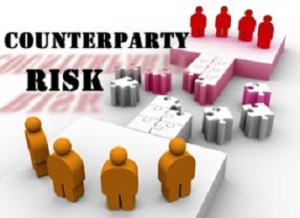“Things got out of control very quickly” during the collapse of Lehman Brothers, said Cady North, Senior Finance Analyst for Bloomberg Government, as she compared counterparty credit risk analysis before and after Dodd-Frank legislation was enacted. North was the first of three speakers at a webinar held on May 20, 2014, sponsored by the Global Association of Risk Professionals. The webinar attracted a record number of registrants.
Prior to the financial crisis of 2007, “no regulatory reporting was going on for counterparty risk on a regular basis,” North said. There was lack of a common legal entity identifier for Lehman Brothers between all counterparties, and this hampered efforts to calculate to what extent systemic risk would rock the whole financial system. It took days, not hours, merely to determine levels of exposure. [Ed. Note: See Allan Grody’s 2012 presentation on the identifier.]
North noted that the new US regulations for counterparty risk were yet to be finalized, but they would include “point-in-time measurement of counterparty exposures” and quarterly credit exposure reports. Both the US Federal Reserve (the Fed) and the Federal Deposit Corporation (FDIC) will be involved; finalization is expected in 2015.
Systemically important financial institutions (SIFIs) will be required to file credit exposure reports that compare actual levels with allowed limits. North estimated this requirement will affect three systemically important non-banks, about 100 foreign banks operating in the US, and 30 to 35 banks operating purely in the US.
The Single Counterparty Credit Exposure Limits (SCCL) elicited “a lot of discussion and uproar” from the stakeholders. Derivative exposures were affected most. The limits, to be regulated by the Fed, were initially proposed to be 10 percent and 25 percent limits for SIFIs, North noted, and at the Basel-recommended limit of 15 percent and 25 percent for smaller institutions. [Ed. Note: percentages quoted refer to limit for aggregate net credit exposure (for major counterparties) and limit for non-major counterparties (assets < $500 billion), respectively.]
North said that the Fed “initially frowned on netting and consideration of margin for derivatives,” although the Basel standard allows it. “The Fed will likely adopt the Basel framework and limits to ensure global consistency,” she concluded.
The regulatory landscape is still changing for counterparty credit risk but is projected to firm up in 2015. Risk managers, stay tuned! ª
Click here to read about the second presentation on counterparty risk. ª


